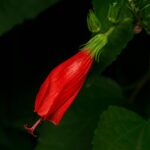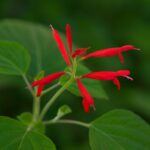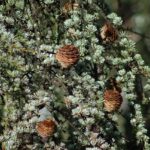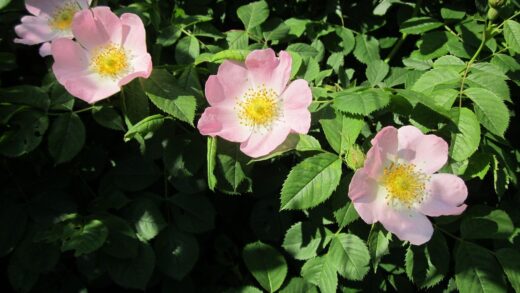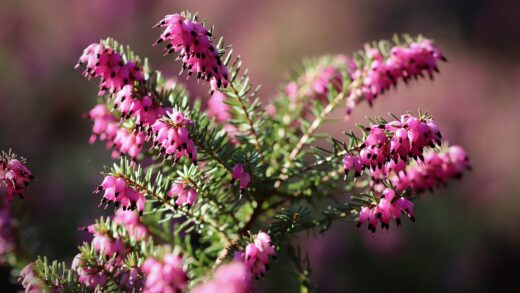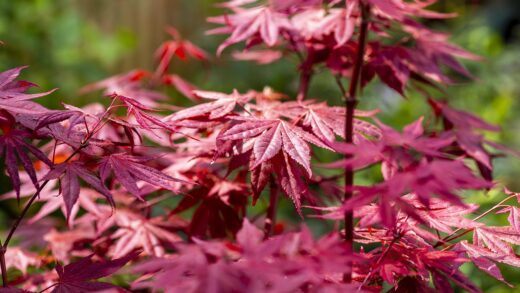Successfully establishing a plush plant begins with a proper planting process, a foundational step that sets the stage for years of healthy growth and visual appeal. This involves not just placing the plant in a container, but creating an optimal environment that caters to its specific needs as a succulent native to arid regions. The choice of container, the composition of the soil, and the initial handling of the plant are all critical factors that contribute to a smooth transition and encourage the development of a robust root system. A well-planted plush plant is far more resilient to environmental stresses and is better equipped to thrive, showcasing its characteristic velvety leaves and vibrant colors to their fullest potential.
The selection of an appropriate container is the first and one of the most important decisions in the planting process, with drainage being the paramount consideration. A pot made from a porous material like terracotta or unglazed ceramic is an excellent choice, as it allows moisture to evaporate through the walls of the pot, helping the soil to dry out more quickly and reducing the risk of root rot. Regardless of the material, it is absolutely essential that the container has at least one drainage hole at the bottom to allow excess water to escape freely. Choosing a pot that is only slightly larger than the plant’s root ball is also advisable, as an overly large pot will hold excess soil and moisture, which can be detrimental to a succulent’s health.
Once you have selected the perfect container, the next step is to prepare the ideal soil mixture, which must be exceptionally well-draining to mimic the plant’s natural habitat. While a pre-packaged cactus or succulent mix from a garden center can serve as a good base, creating your own custom blend often yields the best results and allows you to control the quality of the ingredients. A highly effective mixture can be made by combining one part standard potting soil with one part perlite or pumice, and one part coarse sand or fine gravel. This creates a gritty, porous substrate that provides excellent aeration for the roots and prevents water from accumulating and causing them to rot.
When you are ready to plant, handle the plush plant with care to avoid damaging its delicate, fuzzy leaves or its fragile root system. Gently remove the plant from its nursery pot, and carefully loosen any compacted roots with your fingers to encourage them to grow outwards into the new soil. Place a small amount of your prepared soil mixture at the bottom of the new pot, then position the plant in the center, ensuring that the top of the root ball is level with or slightly below the rim of the pot. Fill in the surrounding space with more of the soil mixture, gently firming it down around the base of the plant to provide stability, but avoid compacting it too tightly, which would impede drainage. After planting, it is generally recommended to wait a few days before watering to allow any damaged roots to heal and callous over, further reducing the risk of rot.
Propagation from stem cuttings
Propagating the plush plant from stem cuttings is a highly effective and popular method for creating new plants, especially for rejuvenating a specimen that has become leggy over time. This process, often referred to as “beheading,” involves carefully removing the top rosette of the plant to encourage it to re-root and form a new, more compact individual. To begin, select a healthy, mature plant and use a clean, sharp knife or a pair of pruning shears to cut the stem about one or two inches below the base of the rosette. Making a clean cut is important as it reduces the risk of infection and promotes better healing for both the cutting and the parent plant.
More articles on this topic
After you have taken your cutting, the next crucial step is to allow the cut end to dry and form a callus, which is a protective layer of tissue that prevents the cutting from absorbing too much water and rotting when it is planted. Place the cutting in a dry, well-ventilated area away from direct sunlight for several days, or even up to a week, until the cut surface feels dry to the touch and has a hardened appearance. This waiting period is essential for successful propagation and should not be skipped, as planting a fresh cutting directly into soil is one of the most common reasons for failure.
Once the cutting has formed a proper callus, it is ready to be planted in its own container to begin the rooting process. Prepare a small pot with the same well-draining succulent soil mixture that you would use for a mature plant. Simply insert the calloused end of the stem into the soil, burying it just deep enough for the cutting to stand upright and be stable. Do not water the cutting immediately after planting; instead, wait about a week before providing a very light watering to encourage the development of new roots without creating an overly moist environment.
Patience is key during the rooting phase, as it can take several weeks or even a month or two for the cutting to establish a healthy root system. Place the potted cutting in a location that receives bright, indirect light, and resist the urge to overwater it during this time. You can check for root development by gently tugging on the cutting; if you feel resistance, it means that roots have begun to form. Once the new plant is well-rooted and you observe new growth from the center of the rosette, you can begin to care for it as you would a mature plush plant, gradually increasing the frequency of watering.
Propagation from leaf cuttings
Another fascinating and highly rewarding method for propagating the plush plant is through individual leaf cuttings, a process that allows you to create a large number of new plants from a single parent. The key to success with this technique lies in how the leaf is removed from the stem, as it must be a clean separation that includes the base of the leaf where it attaches to the main stem. To do this, gently hold a healthy, mature leaf and give it a slight side-to-side twist; it should pop off cleanly from the stem. A leaf that is simply cut or torn in half will not be viable for propagation.
More articles on this topic
Similar to stem cuttings, the removed leaves must be allowed to callus over before they are placed on soil, which prevents them from rotting. Lay the leaves on a paper towel or a dry tray in a well-ventilated area, out of direct sunlight, for a few days until the tiny wound at the base of each leaf has dried and sealed itself. This step is crucial for preventing the leaf from absorbing excess moisture from the soil, which would lead to decay rather than new growth. You will notice that the end of the leaf becomes slightly hardened and dry, indicating it is ready for the next stage.
Once the leaves have calloused, prepare a shallow tray or pot with a layer of well-draining cactus or succulent mix. Lay the calloused leaves flat on the surface of the soil, ensuring that the base of each leaf is making good contact with the medium. There is no need to bury the leaves; simply resting them on top is sufficient. Place the tray in a location with bright, indirect light and refrain from watering for the first week or two. After this initial period, you can begin to lightly mist the soil every few days, just enough to keep it from becoming completely bone dry, which will help to encourage rooting.
Over the next several weeks to a couple of months, you will witness the remarkable process of a new plant forming. Tiny pink or white roots will begin to emerge from the base of the leaf, followed shortly by a miniature rosette, a perfect replica of the parent plant. During this time, the original parent leaf will provide all the necessary nutrients and moisture for the new baby plant. As the new rosette grows larger and develops its own root system, the parent leaf will gradually wither and dry up. Once the parent leaf is completely shriveled, you can carefully separate the new, independent plant and pot it into its own small container.
Propagating offsets
The plush plant, like many other Echeveria species, will naturally produce offsets, also known as “pups” or “chicks,” which are small baby plants that grow from the base of the parent plant’s stem. Propagating these offsets is arguably the easiest and most straightforward method for creating new plants, as they are already complete little plants with their own root systems. This natural vegetative reproduction is the plant’s way of spreading and forming colonies in its native habitat, a trait that can be easily harnessed by the home gardener to expand their collection.
The best time to separate offsets from the parent plant is when they have reached a reasonable size, typically about a third of the size of the mother plant, and have developed their own visible roots. Allowing them to grow to this size ensures that they are strong enough to survive and thrive on their own once they are separated. Attempting to remove offsets that are too small and underdeveloped can be risky, as they may not have sufficient energy reserves or a robust enough root system to establish themselves independently.
To remove an offset, you may need to gently unpot the parent plant to get a better view and easier access to the base. Carefully brush away the soil to expose the point where the offset is attached to the main stem. In many cases, the offset can be gently wiggled and pulled away by hand, but if it is more firmly attached, you can use a clean, sharp knife or razor blade to make a precise cut, ensuring you include as many of the offset’s roots as possible. It is important to make a clean cut to minimize damage to both the parent plant and the pup.
Once the offset has been successfully separated, it can be treated as a new, independent plant. Allow the small wound at the point of separation to callus over for a day or two in a dry, shaded location to prevent rot. After the callusing period, the offset can be planted directly into its own small pot filled with a well-draining succulent soil mix. Water it lightly and place it in a location with bright, indirect sunlight. Because the offset already has a developing root system, it will establish itself much more quickly than a leaf or stem cutting, and you should see signs of new growth within a few weeks.
Post-propagation care
After you have successfully propagated your plush plant, whether from a stem cutting, a leaf, or an offset, providing the correct aftercare is crucial for ensuring the survival and healthy development of the new young plants. For the first few weeks, the primary focus should be on encouraging root establishment, which requires a delicate balance of light and moisture. The newly potted propagules should be placed in a location that receives plenty of bright, indirect light, but they should be protected from the harsh, direct sun, which can scorch the tender new growth and dry out the soil too quickly.
Watering during this initial establishment phase is one of the most critical and often misunderstood aspects of post-propagation care. Unlike mature plants, new cuttings and offsets should not be subjected to the “soak and dry” method immediately. Instead, it is better to water them sparingly, providing just enough moisture to encourage root growth without creating a soggy environment. Misting the soil surface every few days or providing a very small amount of water around the base of the plant is usually sufficient until a robust root system has formed, which you can test for by gently tugging on the plant.
It is important to refrain from fertilizing your newly propagated plush plants until they are well-established and showing clear signs of active new growth. Young plants are very sensitive, and their developing root systems can be easily burned by the salts in fertilizers. Wait at least a month or two, or until the plant has visibly increased in size, before you begin to introduce a highly diluted fertilizer. When you do start to feed them, use a balanced succulent fertilizer at a quarter or half of the recommended strength, and only during the active growing season of spring and summer.
As your new plants grow and mature, you can gradually transition them to a care routine that is more typical for an adult plush plant. This includes slowly acclimatizing them to more direct sunlight to encourage the development of their vibrant leaf tip coloration and transitioning to a more thorough “soak and dry” watering method. The success of propagation does not end when roots appear; it continues with the careful nurturing of the young plant until it becomes a strong, resilient, and beautiful specimen, ready to continue the cycle and produce propagules of its own one day.









